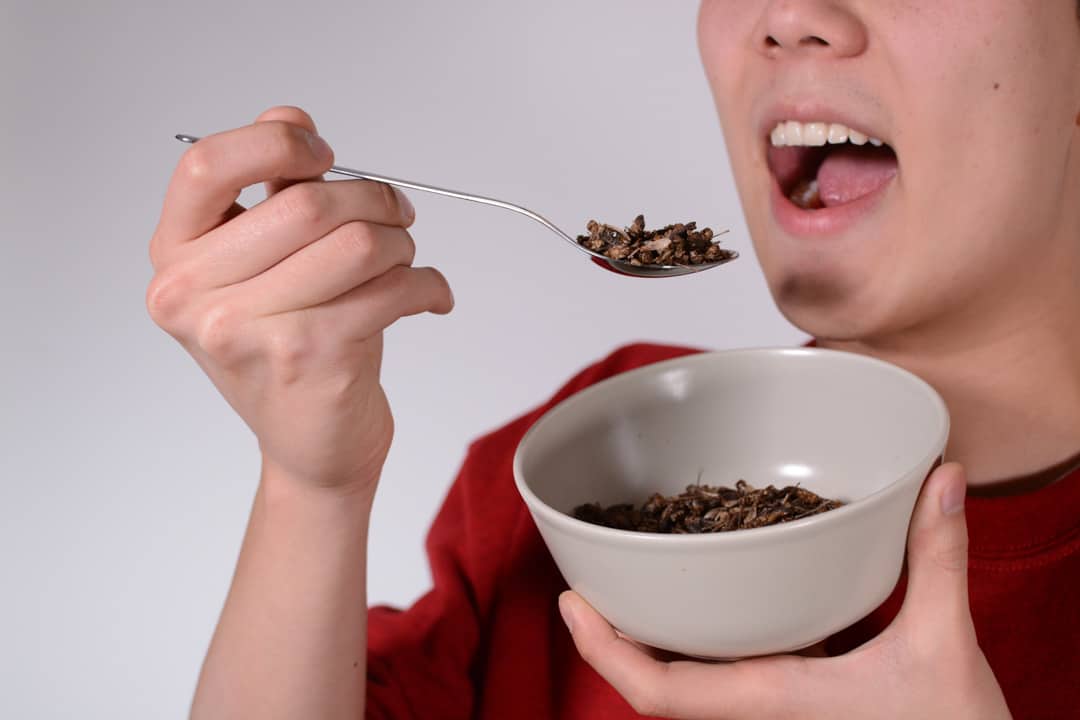Would you like some crickets with your guac? It may not be long before you see six-legged creatures sharing menu real estate with beef and pork. With the global human population set to reach nine billion by 2050, experts say that conventional protein sources will soon be insufficient to feed everyone. Insects have been proposed by several groups as a protein alternative due to their high nutritional content and economic and environmental benefits.
Over 2,000 insect species are edible; the most commonly consumed species include beetles, caterpillars, wasps, bees, and ants, followed by grasshoppers, locusts, and crickets. Insects are already frequently consumed and are considered a delicacy in 113 countries. In fact, chapulines, a type of grasshopper, are a national dish in Mexico.
Nutritional composition is highly varied among insect species. Within a species, it depends on the stage of metamorphosis, the origin of the insect, and how the insect is prepared. Most edible insects meet the essential protein and energy requirements for human consumption, and they also contain beneficial vitamins, minerals, and fatty acids.
The Nutrient Value Score (NVS) is a tool used to evaluate the nutritional content of food based on energy, protein, fat, and eight micronutrients. A 2016 study used NVS and found that palm weevil larvae and mealworms were significantly healthier than both beef and chicken. The study also revealed that the median iron content of crickets and honeybees were 180 and 850 per cent greater than beef, respectively.
Eating insects may also benefit gut microbiome. Gut microbiota must consume prebiotics, a type of non-digestible fibre, to grow efficiently. The exoskeletons of insects are rich in prebiotic fibre, and they can even be crushed to a powder and added to salad dressings and shakes as a protein and fibre booster.
The attraction of insects as an alternative protein source goes beyond just their nutritional benefits. Compared to conventional livestock, farming insects emits fewer greenhouse gases, requires less land, and causes less water pollution. Insects that are usually considered pests can be farmed for human consumption, which may reduce the use of pesticides for agriculture and alleviate the financial burden of pest control for farmers.
There are even economic benefits: 70 per cent of livestock production costs involve producing feed for animals. Feed conversion efficiency is the measure of an animal’s ability to convert their feed mass into body mass. Insects tend to have higher feed conversion efficiencies than conventional meats. Another 2016 study found that the house cricket has twice the feed conversion efficiency of chickens, four times that of pigs, and 12 times that of cattle.
However, the consumption of insects does not come without drawbacks. Some insects produce toxic compounds and contain heavy metals that can transfer to humans upon consumption. Many insects also have more sodium and saturated fat than conventional meats, which can increase the chance of coronary heart disease. The processing and storage methods for mass insect production are still being investigated.
Despite these drawbacks, consuming insects may be the best alternative protein source in a rapidly growing world. Their high nutrient and protein content make insects an attractive option for regions with high food insecurity and malnourishment. As traditional meat sources face increasing environmental, social, and economic pressures, the choice to eat insects may soon become a necessity.


